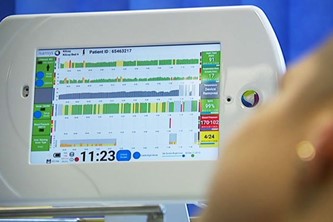Isansys Lifecare has become one of the first wireless patient monitoring manufacturers to achieve EU certification of its quality management system.
The EU Medical Device Regulation certificate has been issued for the Patient Status Engine, which can now enter European markets.
“Achieving MDR certification is a very important milestone for Isansys and is the result of our early adaptation to the new and more stringent regulatory requirements in Europe,” said Julian Jones, chief compliance and regulatory affairs officer at Isansys, which featured on our MedTech 50 ranking last year.
“This certification of our QMS under the MDR allows us to continue with the development and approval of our new products in accordance with current EU regulations ensuring both safety and performance of devices for their intended clinical application.
“This is a company-wide achievement, and it wouldn’t have been possible without the extensive and diligent work of the entire Isansys Lifecare team.
“This approval now allows Isansys to continue on its stated goal to provide safer care to patients everywhere.”
Keith Errey, CEO at Isansys, said: “Without doubt, the MDR has raised the standards for medical device regulation and we are excited to be one of the first medical device companies to receive MDR certification.
“This allows us to adhere to our most important goal of making the patients and our customers our first priority by providing medical devices of the highest quality. We are now poised to take great leaps forward in their technology needs.”
Isansys Lifecare – Every patient monitored, connected and safe
The Medical Device Regulation came into effect in May 2021 for all manufacturers, distributors, and users of medical devices in the EU, replacing the prior Medical Device Directive.
In comparison to the previous directives, the MDR is intended to establish a robust, transparent, predictable, and sustainable regulatory framework for medical devices to ensure a high level of safety and health whilst supporting innovative companies.
As such, most companies selling products in the EU have had to make significant improvements to documentation, technical testing, and clinical evaluation of their medical devices in order to comply with the new MDR.

